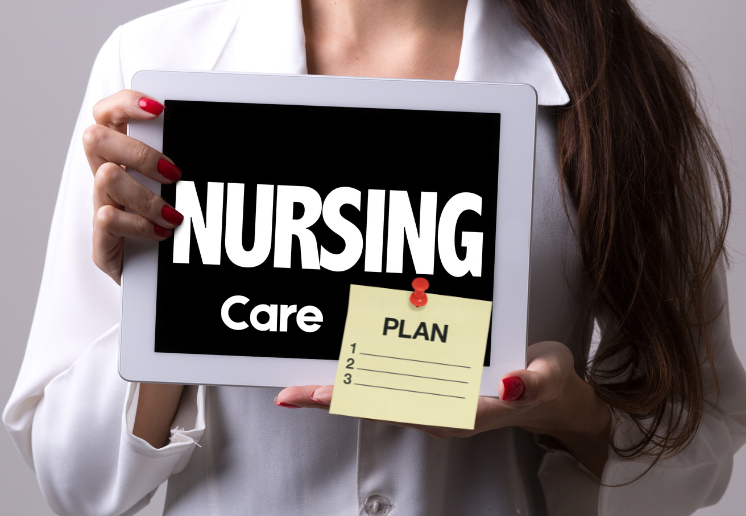Table of Contents
Burns are among the most painful and complex injuries, demanding swift, precise medical intervention. For healthcare professionals, mastering burn care isn’t just about memorizing protocols. It’s about making critical decisions under pressure.
Are you studying for exams or refining your clinical skills? Then well-crafted burns practice questions can sharpen your diagnostic reasoning and treatment strategies.
This blog will provide you with targeted questions and the essential knowledge needed to care for burn cases as a registered nurse. Let’s begin.
What are Burns?
Burns are tissue injuries caused by heat, chemicals, electricity, radiation, or extreme friction. They damage the skin’s layers—sometimes deeper tissues—leading to pain, swelling, and vulnerability to infection. Burns are classified by severity:
- First-degree (superficial, like sunburns)
- Second-degree (partial-thickness, with blisters)
- Third-degree (full-thickness, destroying skin and nerves)
- Fourth-degree (deep-tissue damage, affecting muscles/bones)
Immediate treatment depends on the burn’s depth and cause. Severe burns require urgent medical care to prevent complications like dehydration, infection, or scarring.
Understanding burns is critical for effective first aid and long-term recovery. So let’s discuss the types of burns in detail.
Types of Burns (Classified by the Cause)
Burns can be classified and categorized based on their cause and depth of tissue damage. Understanding these burn types is the first, crucial step to proper assessment and treatment. First, by cause.
Thermal Burns
What?
Thermal burns are tissue damage caused by contact with hot objects, scalding liquids, steam, or flames. They are the most common type of burn. The severity of a thermal burn depends on the temperature of the heat source and the duration of contact with the skin.
Why?
These burns occur when the skin comes into direct contact with a source of heat. Common causes include:
- Flames: From house fires, campfires, or clothing catching fire.
- Scalds: From hot liquids like boiling water, coffee, tea, or oil. Steam from cooking or industrial processes can also cause severe scalds.
- Contact with hot surfaces: Such as stoves, irons, curling irons, or hot metal.
Symptoms
The symptoms are directly related to the burn’s depth:
- Redness and pain: The most common initial symptoms.
- Blisters: A hallmark of second-degree burns, these are fluid-filled sacs on the skin.
- Peeling skin: Often occurs as the burn starts to heal.
- White, leathery, or charred skin: Indicates a severe, third-degree burn that has destroyed the full thickness of the skin.
- Swelling: The burned area will likely swell.
Treatment
- Minor burns (1st/2nd degree): Cool with running water (10-20 mins), cover with sterile gauze, avoid ice or butter. Use OTC pain relievers (ibuprofen, acetaminophen).
- Severe burns (3rd/4th degree): Call emergency services. Do NOT remove stuck clothing. Cover loosely with a clean, dry cloth. IV fluids and professional wound care are critical.
Chemical Burns
What?
Chemical burns, also known as caustic burns, are tissue damage caused by contact with a corrosive substance. For example, a strong acid or alkali (base). These burns can cause a chemical reaction that continues to damage the tissue until the chemical is neutralized or removed.
Why?
Chemical burns can occur in various settings, including at home, in industrial workplaces, or as a result of an assault. Common causative agents include:
- Acids: Such as sulfuric acid (found in car batteries), hydrochloric acid, and nitric acid.
- Alkalis (Bases): Like sodium hydroxide (lye, found in drain cleaners), potassium hydroxide, and ammonia.
- Other chemicals: Including phenols, cresols, and white phosphorus.
Symptoms
These burns can be deceptive, as damage can continue long after initial contact.
- Redness, Irritation, or Burning Sensation: Occurs at the site of contact.
- Pain or Numbness: The affected area can be painful or, in some cases, lose sensation.
- Blackened or Dead-Looking Skin (Eschar): A sign of severe tissue damage.
- Coughing or Shortness of Breath: If fumes are inhaled.
- Vision Changes or Eye Pain: If the chemical gets into the eyes.
Treatment
- Immediate Action: Rinse with copious water (15-30 mins). Remove contaminated clothing carefully.
- Neutralization: Avoid home remedies (e.g., vinegar/baking soda)—some chemicals react violently. Seek ER care for strong acids/alkalis.
- Medical Treatment: Debridement, topical antibiotics, and possible skin grafts for severe cases.
For deeper insight into the components of nursing process, check here.
Electrical Burns
What?
Electrical burns are tissue damage resulting from contact with an electrical current. The electricity passes through the body from an entry point to an exit point, causing both external and internal injuries.
Why?
These burns are caused by exposure to electrical sources, which can be low-voltage or high-voltage. Common causes include:
- Household accidents: Contact with faulty wiring, appliances, or inserting objects into electrical outlets.
- Workplace accidents: Particularly common among electricians, construction workers, and power line technicians.
- Lightning strikes (albeit quite unlikely): A natural source of high-voltage electricity.
Symptoms
These are medical emergencies because the visible damage can be misleading.
- Entry and Exit Wounds: Often appear as small, distinct burns where the electricity entered and left the body. These can look charred or like a crater.
- Irregular Heartbeat (Arrhythmia) or Cardiac Arrest: The electrical current can disrupt the heart’s natural rhythm. This is the most immediate life-threatening symptom.
- Muscle Contractions or Seizures: The electricity can cause involuntary muscle spasms.
- Numbness, Tingling, or Paralysis: Indicates nerve damage along the current’s path.
- Confusion or Difficulty Breathing: Can result from the shock to the nervous system and body.
Treatment
- First Aid: Turn off power before touching the victim. Check for breathing/CPR if needed.
- Medical Priority: Even small entry/exit wounds can hide deep tissue damage. ECG monitoring (risk of cardiac arrhythmia) and IV fluids often required.
Radiation Burns
What?
Radiation burns are damage to the skin or other biological tissue as a result of exposure to radiation. This can be from ionizing radiation (like X-rays and gamma rays) or non-ionizing radiation (like ultraviolet rays from the sun).
Why?
The causes of radiation burns vary depending on the type of radiation:
- Sunburn: The most common type of radiation burn, caused by overexposure to the sun’s ultraviolet (UV) rays.
- Radiation therapy for cancer: A controlled medical use of high-energy radiation that can cause localized skin reactions in the treatment area.
- Nuclear accidents or exposure to radioactive materials: Can cause severe and widespread radiation burns.
Symptoms
The most common form is a sunburn, but medical and industrial sources can cause more severe burns.
- Redness or Discoloration: The skin appears red or darkened, similar to a sunburn.
- Pain and Tenderness: The affected area is sensitive to touch.
- Peeling or Flaking Skin: Occurs as the top layer of damaged skin sheds.
- Blistering and Swelling: In cases of more severe exposure (e.g., severe sunburn or radiation therapy).
- Fatigue: A common systemic symptom, especially with radiation therapy.
Treatment
- Sunburn: Aloe vera, cool compresses, hydration, and NSAIDs. Avoid further UV exposure.
- Severe (Radiation Therapy Burns): Prescription creams (silver sulfadiazine), sterile dressings, and infection monitoring. Hyperbaric oxygen therapy may help healing.
Friction Burns
What?
Friction burns are a combination of an abrasion and a heat burn. They occur when the skin is scraped against a rough surface. It creates both a shearing force that removes layers of skin and heat from the friction.
Why?
These burns are common in accidents and certain activities:
- Road rash: From falling off a bicycle or motorcycle onto pavement.
- Carpet burns: From scraping skin against a carpet.
- Treadmill accidents: Contact with the moving belt.
- Sports injuries: Sliding on a gym floor or artificial turf.
Symptoms
This is a combination of a scrape (abrasion) and a heat burn.
- Scraped, Raw-Looking Skin: The top layers of skin are visibly worn away.
- Redness and Pain: The area is typically very tender and inflamed.
- “Road Rash” or “Carpet Burn” Appearance: Often contains embedded dirt or debris from the surface that caused the injury.
- Minimal to No Bleeding: While raw, these burns often don’t bleed heavily unless they are very deep.
- Swelling: Common around the abraded area.
Treatment
- Cleaning: Rinse with saline/clean water to remove debris. Avoid scrubbing.
- Dressing: Non-stick bandages with antibiotic ointment. Deep abrasions may need debridement and tetanus booster.
Proper identification ensures correct emergency response and long-term care. And if you have signs of infection (like pus or fever) or difficulty breathing (due to inhalation injury), visit a clinic or hospital right away.
These burns are among the key topics in the NCLEX study plan as the registered nurses and licensed practical nurses must understand them for patient care. If a patient with 2nd-degree burns walked in, would you know the NCLEX-priority action? Then enroll with our NCLEX prep course.
Types of Burns (Classified by Burn Depth)
Besides the causes, burns can also be classified based on how deeply they penetrate the skin and underlying tissues. Understanding these classifications helps determine treatment urgency and healing expectations.
First-degree Burns (Superficial)
These burns are the least severe type, affecting only the outermost layer of the skin, known as the epidermis. A common example of a first-degree burn is a mild sunburn. These burns typically do not cause long-term tissue damage and rarely result in scarring.
Symptoms
- Appearance: The skin appears red and dry. There are no blisters.
- Sensation: The burn is painful and tender to the touch.
- Texture: The skin may feel warm. When you press on the reddened area, it will turn white (blanch) and then return to red.
- Swelling: Minor swelling may be present.
Treatment
- Cool Water: Immediately run cool (not cold) water over the area for 10-20 minutes.
- Soothing Lotions: Apply aloe vera gel or a basic moisturizer to soothe the skin.
- Pain Relief: Use over-the-counter pain relievers like paracetamol or ibuprofen.
- Protection: The burn usually does not need a bandage.
Healing Time
First-degree burns typically heal within 3 to 6 days without scarring. The skin may peel as it heals.
Second-degree Burns (Partial-thickness)
A second-degree burn is more serious as it involves damage to both the epidermis (outer layer) and the dermis (the layer underneath). The classification depends on how deep the burn goes into the dermis. Based on that, it will be of superficial partial-thickness or deep partial-thickness.
Symptoms
- Appearance: The skin is intensely red, swollen, and often looks moist or shiny.
- Blisters: This is the hallmark of a second-degree burn. Blisters, which are bubbles filled with clear fluid, develop on the skin. Do not pop them, as they protect the underlying tissue from infection.
- Sensation: These burns are typically very painful to the touch and even to changes in air temperature.
- Blanching: The area will usually turn white when pressed.
Treatment
- Cool Water: Run cool water over the burn for 10-20 minutes.
- Do Not Break Blisters: Avoid popping blisters, as they protect the underlying skin from infection.
- Cover the Burn: Apply a sterile, non-stick bandage to protect the area, especially if blisters break.
- Antibiotic Ointment: If blisters open, apply a thin layer of an antibiotic cream or ointment before covering.
- Seek Medical Advice: Consult a doctor if the burn is large (over 3 inches) or on the hands, feet, face, or groin.
Healing Time
Healing can take 1 to 3 weeks. Deeper second-degree burns may take longer and are more likely to scar.
Third-degree Burns (Full-thickness)
Third-degree burns may not cause pain in the center because nerve endings are destroyed, though surrounding areas are extremely painful.
Symptoms
- Appearance: The burn site may appear white, leathery, blackened, charred, or have a waxy texture. There may be dark brown or translucent areas.
- Sensation: Surprisingly, since the nerve endings have been destroyed, there may be little to no pain in the center of the burn. But around the burn, it will be very painful.
- Texture: The skin will be dry and tough. It will not blanch when pressed.
- Swelling: Significant swelling is common.
Treatment
- Call for Emergency Help Immediately: This is a medical emergency.
- Cover the Area: Use a cool, moist, sterile bandage or a clean, moist cloth to cover the burn while waiting for help.
- Do Not Use Ice or Ointments: Avoid applying ice, creams, or home remedies.
- Hospital Treatment: Requires immediate professional medical care. That includes IV fluids, infection control, and almost always skin grafting surgery.
Healing Time
Healing can take many months and will result in significant scarring. Physical and occupational therapy are often required.
Fourth-degree Burns
Fourth-degree burns extend beyond the skin into muscle and bone, often requiring surgical intervention or amputation.
Symptoms
- Appearance: The area is blackened, charred, and often looks like it has been cooked. Muscle and bone may be visible.
- Sensation: There is absolutely no feeling in the affected area, as all nerve endings have been completely destroyed.
- Function: There is a complete loss of function in the affected part of the body.
Treatment
- Immediate Emergency Response: This is a critical, life-threatening emergency requiring immediate transport to a specialized burn unit.
- Surgical Intervention: The primary treatment is surgery to remove all dead tissue (debridement).
- Amputation: Often, amputation of the affected limb or digit is necessary to prevent a fatal infection from spreading.
- Complex Reconstruction: Requires extensive, long-term reconstructive surgery after initial life-saving measures.
Healing Time
Fourth-degree burns carry a high risk of death. The recovery process is extremely long. It will involve a multidisciplinary team of surgeons, therapists, and mental health professionals. There may even be permanent function impairment.
Understand that depth determines severity—not just size. Even small deep burn injuries need ER attention. But how do you estimate the percentage of burns with relative accuracy? Let’s find out.
What is the Rule of Nines?
The Rule of Nines is a quick method used to estimate the total body surface area (TBSA) affected by burns in adults. First-degree burns, such as mild sunburn, are not included in this calculation.
This protocol divides the body into sections, each representing 9% (or multiples of 9%) of TBSA:
- Anterior & Posterior (or Head & Neck): 9%
- Arms (Front & Back) = 18% (each arm counts as 9%)
- Anterior Torso (Chest & Abdomen): 18%
- Posterior Torso (Upper & Lower Back): 18%
- Legs (Front & Back) = 36% (each leg comes counts 9%)
- Perineum (or Groin/Genitalia): 1%
When the skin is severely damaged by a burn, its protective barrier is lost. This leads to a massive loss of body fluids. It can quickly result in dehydration, hypovolemic shock, and organ failure.
With a quick TBSA estimation, registered nurses and other medical professionals can use specific formulas, such as the Parkland Formula. They can calculate the precise amount of intravenous fluids a patient will need over the first 24 hours to remain stable.
FAQs on Burns
Q.1 Should I pop burn blisters?
No! Absolutely not! Blisters protect healing skin. Popping invites infection. Cover intact blisters loosely; if they burst, clean gently + apply antibiotic ointment.
Q.2 Why do some burns hurt more as they heal?
Partial-thickness burns (2nd degree) expose live nerve endings. As new skin forms, these nerves misfire—like wires regrowing without insulation.
Q.3 Can sunburn cause long-term damage?
Every blistering sunburn doubles melanoma risk. Even “tanned” skin shows DNA damage. Prevent: SPF 30+, reapply every 2 hours.
Q.4 How long should I rinse a chemical burn?
At least 15-20 minutes under running water. Some chemicals require even longer—keep flushing until help arrives.
Q.5 Should I remove clothing stuck to a burn?
No—you could tear the skin. Leave it, cool the area, and let medical professionals handle removal.
Q.6 Can I treat a burn with honey?
Medical-grade honey (like Manuka) can help minor burns, but household honey isn’t sterile. Stick to approved treatments first.
Final Thoughts
Burns are more than just skin-deep injuries. They demand quick thinking, proper care, and a clear understanding of their complexities. Are you a medical professional, student, or simply looking to be prepared? Then recognizing burn types, treatments, and potential complications can make a life-saving difference.
The practice questions throughout this blog aren’t just tests; they’re tools to sharpen your skills for real-world emergencies. The more you learn, the better you can respond—whether it’s a minor kitchen burn or a critical trauma case.Struggling with injury management concepts? Our NCLEX prep program breaks down complex topics into simple easy-to-understand lessons. So enroll with us today!



